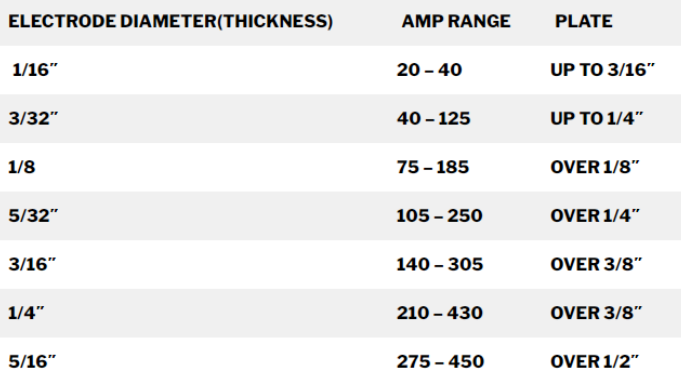There are several factors to consider in welding rod selection
There are several factors to consider in welding rod selection:
- Base metal properties.You need to know what type metal, what thickness metal you will used on, Base metal thickness, shape and joint fit-up.
- Tensile strength.
Tensile strength refers to the maximum amount of stress that a material can experience while being either stretched or pulled before breaking or failing .
The minimum tensile strength of the electrode must be matched to the minimum tensile strength of the base metal in order to avoid weld discontinuities such as cracking.
The welding electrodes used in most applications will be from either the 6000 or 7000 series. For example, an E6011 has a tensile strength of 60,000 psi. An E60 series welding rod will match the tensile strength of a mild steel according to Miller Welds.
- Welding current.
The use of direct current and alternating current for the electrode is different. The DC welding arc is stable, but which one is used is related to the nature of the electrode.
For example, J506 carbon steel basic electrode is used. Although J506 is used for both AC and DC, the DC welding arc is stable. When AC is used, the arc is continuously broken, and the welding is barely carried out.
- Welding position.
You must also consider the welding position when choosing which electrode to use. The welding position refers to the direction in which the welding bead is laid out by the driller.
The most commonly-used welding rods are all-position welding rods. There are 4 major welding positions.
Flat, Horizontal, Vertical, Overhead
Most welding rods sold are all-position electrodes, but it still pays to look at the 4 or 5 digit number on the electrode when you are working with equipment that you purchase.
- Specification and service conditions.
What Size Welding Rod Should I Use?
Typically the thickness of the welding rod should be matched with the thickness of the metal you are working with.
The amount of current a welding rod can safely handle depends upon its diameter.
You can see the welding rod size charts that show the relationship between welding rod diameter and amperage, including this one produced by Firepower.
You can see in the chart that the welding rods range in size 5/64” in diameter to 5/32” in diameter.
The chart also shows the corresponding recommended plate thickness of the base metal that you will be welding.
You will notice in this chart that there are welding rods ranging from 1/16” in diameter all the way up to 5/16” in diameter. Their chart looks something like this:

- The coating materials
Coating Material
There are 8 different types of coatings used on welding rods that are included within the American Welding Society (AWS) classification system.
The coating material will determine which type of current, AC, DC+, or DC- that you will be using. As an example, high titania sodium and high titania potassium coatings are both compatible with AC current, but if you’re using DC- (direct current, negative polarity) then you will need to use a high titania sodium.
- Environmental job conditions.
The E6013 electrode:
Has a tensile strength of 60,000 psi: making it well-suited for use with mild steel
Is an all-position electrode: this electrode can be used in the flat, horizontal, vertical and overhead positions
Has a coating made of high titania potassium: compatible with AC and DC+ current
Most entry-level welding machines operate with an AC current. Finding a welding rod compatible with AC current is not difficult, as 6 of the 8 welding coating materials work with AC current. Another reason that E6013 electrodes are easy to use is that it produces a soft arc capable of producing less slag than the E6011 electrode.
The arc of the E6013 also doesn’t penetrate through the base metal quite as easily as the E6011 does, leaving some room for error for an operator who hasn’t yet gotten a feel for how closely the arc should be held from the base metal.


